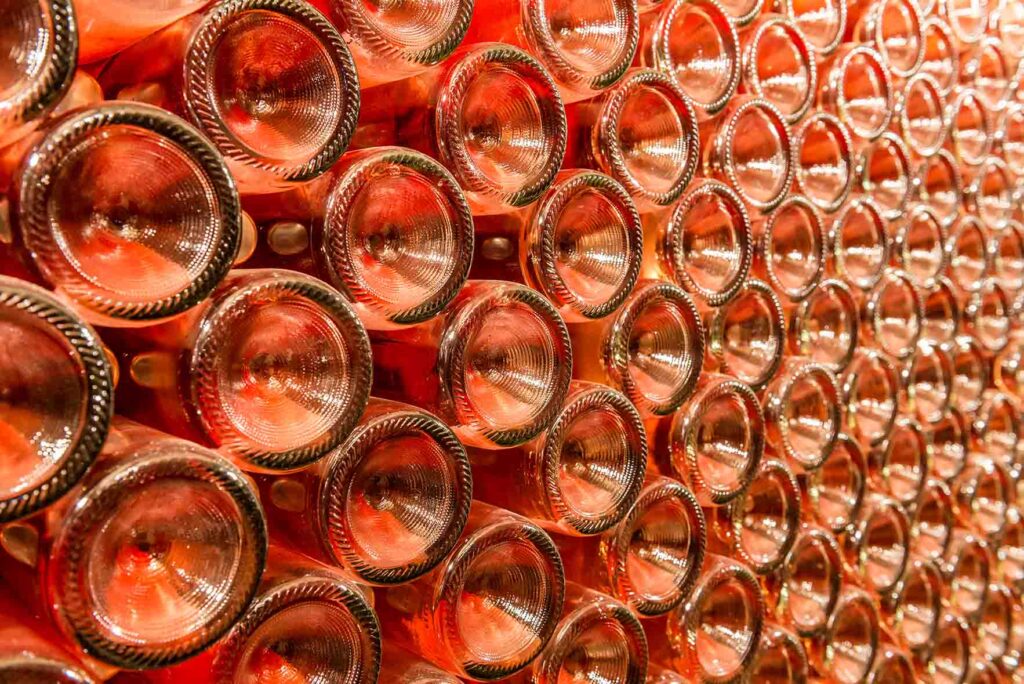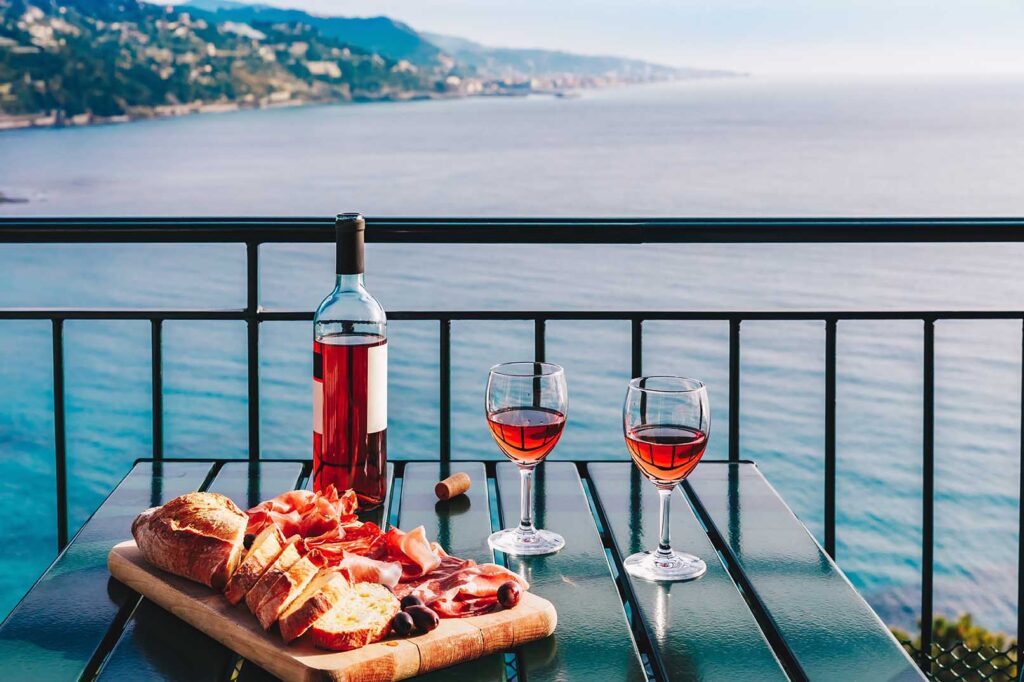What better way to enjoy the summer season than with a good glass of rosé wine? Rosé wine is a faithful friend of our warm summer afternoons and evenings! But do you know how to recognize a good rosé at first glance? Or how to choose the perfect rosé to suit your mood? Then let us guide you, and rosé wine will no longer hold any secrets for you.
How is rosé wine made?
We already told you in another article that there were several types of wine making processes are used to obtain rosé wine.
By maceration: the wine is then made from a black grape variety, and the grapes are placed in a vat 24 hours before the start of fermentation. During this short period, the pigments present in the skin of the grapes will impregnate the juice and give it a rosy hue.
By direct pressing: the grapes are then pressed directly after the harvest. The collected juice is put directly into a vat for fermentation. This technique gives a very clear, almost translucent rosé.
By bleeding: this is using the red wine making process method. The aim is to leave the skins in contact with the juice (which gives red wine after maceration), but to remove the juice from the vat more quickly when it has reached the desired color (hence the term “bleeding”). The juice drawn off will be used to produce rosé wine, while the rest continues its maceration, and will give red wine.
By blending: this technique consists of mixing red and white wine to produce rosé wine. This technique is used to produce 15% of the rosé wines in the world. However, this practice is totally forbidden in France, except for the Champagne region, which can produce rosé Champagnes using this process.
There are about 140 different shades of rosé, from the lightest to the darkest. Many people will tell you that light rosé wines are the best, and that you should be wary of dark rosé wines, which is quite incorrect. On the other hand, the real rule to respect is to choose a rosé with a lively and brilliant color. It is a guarantee of quality, whether the wine is light or dark.
How to choose your rosé wine
Here we are, finally at the part you’re interested in! How to choose your rosé wine? Even if the previous information will help you get an idea, here are the different ways to choose your rosé wine.

Choose it according to the moment you want to spend
Unlike what most people think, rosé wine is not just an aperitif wine. And it is the color that will give you an idea of the choice to be made. If you are looking for a wine for an aperitif, or an afternoon by the pool, choose a rosé wine with a light color. Clear rosé wines mostly have a fruity taste, a low alcohol content (around 12°), and they will be light and therefore easier to drink.
On the other hand, if you are looking for a rosé wine to accompany a dinner, choose a wine with a dark color. Dark rosés are mostly stronger wines, between 12° and 14°, which is ideal to pair with a meal. Darker rosés are more tannic and full-bodied.
Choose it according to your tastes
As far as taste is concerned, the color will also give indications. A light color will come from a light and not very tannic wine, with a taste of exotic fruits, and a floral mouthfeel. This is the case for most rosé wines of Provence.
A dark color comes from a wine with a pronounced and strong taste on the palate, with blackcurrant, red fruit, and strawberry flavors.
The color will also give you an idea of the grape varieties used to make this rosé wine. A light color will come from grape varieties such as Cinsault from Provence, Gamay from Beaujolais, or Pinot Noir from Burgundy. A dark color will come more generally from Malbec, merlot, or Syrah varieties.
Choose it according to the region
The region of origin of the rosé wine can also help you find your way around. Aperitif wines (often clear), are often wines from Provence or Languedoc. They are light and fruity wines. The rosé wines, more tannic and full-bodied, on the other hand, come for the most part from the regions of Bordeaux, Bergerac, or the Rhone Valley.
However, you have to be careful with exceptions, because each French wine region has its own particularities. And the rules outlined above can then change. The most striking example could be the rosé wines of Bandol. This is the star of the wines of Provence, although they are dark in color and have a pronounced taste.
Choose it according to your budget
A good rosé wine is priced between 6 and 12 euros. At that price, you can be almost sure that the wine you choose will be of good quality and will be pleasant to drink.
When choosing a red or white wine, many will tell you that price is a guarantee of quality. This rule does not apply as easily to rosé wine. A rosé that is too expensive can be a sign of a wine that is too “branded”, and a rosé at 6 euros can prove to be just as good. It is therefore important to be vigilant regarding “rosé brands”, and to favor a wine that may be less expensive, but just as good. However, we must not forget the must-tries such as Miraval, Minuty and Domaine de Bendel.
How to enjoy your rosé wine?
Rosé wine is a wine that can be enjoyed quite easily, whether as an aperitif or a table wine. In general, it is a wine that can be drunk chilled, between 8 and 10 degrees for aperitif rosé, and between 10 and 12 degrees for table rosé. The temperature is very important in the tasting of rosé wines. If it is too cool, you will lose all the aromas, and the wine will seem bland. On the contrary, if it is drunk too hot, the rosé wine will simply not be pleasant to drink.

Unlike some red wines, rosé wine is a wine that most of the time does not require special aeration. Rosé wines are usually wines that can be opened at the last moment. On the other hand, it is necessary to make sure that the wine is at the right temperature. And if necessary, place the bottle in an ice cube tray or something else, to prevent it from heating up (especially in summer).
To find out which glass to use for tasting your rosé, do not hesitate to consult our article on wine glasses.
One last little tip: you can replace the ice cubes with grapes or cherries previously placed in the freezer, which will perfectly replace the ice cube and give a nice touch to your wine.
And for more information, check the Aveine application.









